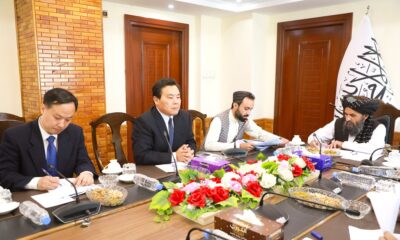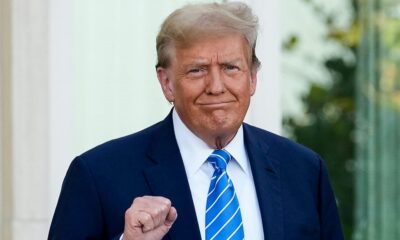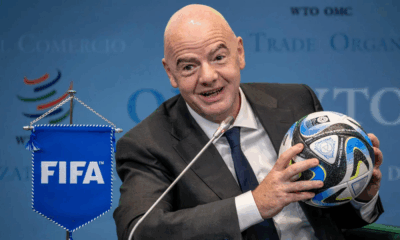Science & Technology
TikTok is restoring service, thanks Trump
TikTok CEO Shou Zi Chew plans to attend the U.S. presidential inauguration and attend a rally with Trump on Sunday, a source told Reuters.
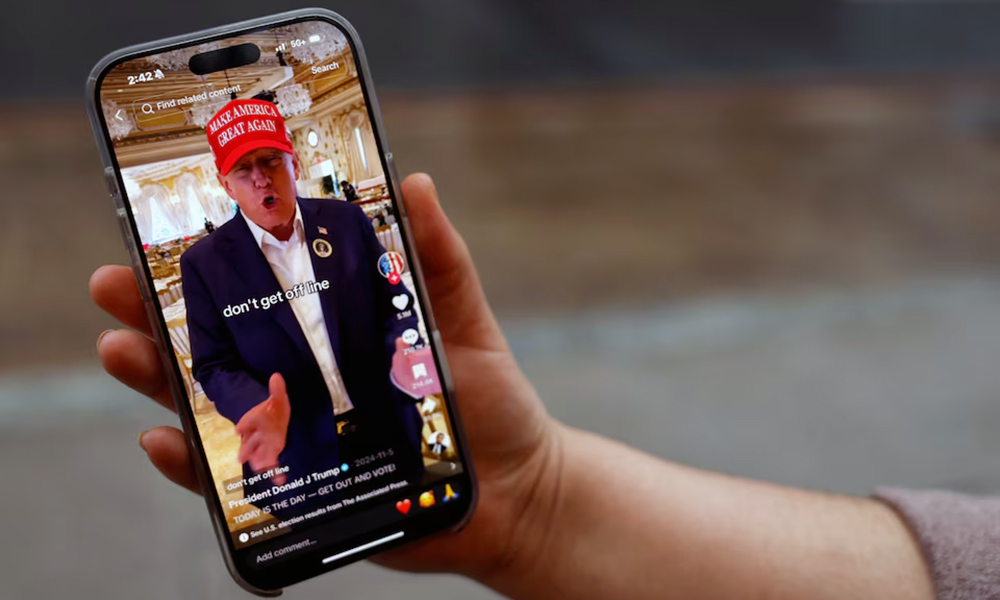
TikTok began restoring its services on Sunday after President-elect Donald Trump said he would revive the app’s access in the U.S. when he returns to power on Monday, Reuters reported.
“Frankly, we have no choice. We have to save it,” Trump said at a rally on Sunday ahead of his inauguration, adding that the U.S. will seek a joint venture to restore the short-video sharing app used by 170 million Americans.
In a message to users hours before the rally, TikTok said: “As a result of president Trump’s efforts, TikTok is back in the U.S.”
TikTok also issued an earlier statement after U.S. users reported being able to access the Chinese-owned service’s website while the far more widely used TikTok app itself began coming back online for some users with just a few basic services. As of Sunday evening, the app remained unavailable for download on U.S. app stores.
“In agreement with our service providers, TikTok is in the process of restoring service,” TikTok said in the earlier statement that also thanked Trump for “providing the necessary clarity and assurance to our service providers that they will face no penalties (for) providing TikTok to over 170 million Americans and allowing over 7 million small businesses to thrive.”
TikTok’s public thanks to Trump, the day before he takes office, comes at a tense moment in U.S.-China relations. Trump has said he intends to place tariffs on China but has also indicated he hopes to have more direct contact with China’s leader.
The Chinese Embassy in Washington on Friday accused the U.S. of using unfair state power to suppress TikTok. “China will take all necessary measures to resolutely safeguard its legitimate rights and interests,” a spokesperson said.
TikTok stopped working for U.S. users late on Saturday before a law shutting it down on national security grounds took effect on Sunday. U.S. officials had warned that under Chinese parent company ByteDance, there was a risk of Americans’ data being misused, read the report.
Trump said he would “extend the period of time before the law’s prohibitions take effect, so that we can make a deal to protect our national security.”
“I would like the United States to have a 50% ownership position in a joint venture,” he wrote on Truth Social.
Trump said the executive order would specify there would be no liability for any company that helped keep TikTok from going dark before his order.
Trump had earlier said he would most likely give TikTok a 90-day reprieve from the ban after he takes office, a promise TikTok cited in a notice posted to users on the app.
“A law banning TikTok has been enacted in the U.S. Unfortunately, that means you can’t use TikTok for now. We are fortunate that President Trump has indicated that he will work with us on a solution to reinstate TikTok once he takes office. Please stay tuned,” a message notified users of TikTok, which disappeared from Apple (AAPL.O), and Google app stores late on Saturday.
Trump saving TikTok represents a reversal in stance from his first term in office. In 2020, he aimed to ban the app over concerns the company was sharing Americans’ personal info with the Chinese government. More recently, Trump has said he has “a warm spot in my heart for TikTok,” crediting the app with helping him win over young voters in the 2024 election.
In August 2020, Trump signed an executive order giving ByteDance 90 days to sell TikTok but then blessed a deal structured as a partnership rather than a divestment that would have included both Oracle (ORCL.N), and Walmart (WMT.N), taking stakes in the new company, Reuters reported.
Not everyone in Trump’s Republican Party agreed with efforts to get around the law and “Save TikTok”.
Republican senators Tom Cotton and Pete Ricketts said in a joint statement: “Now that the law has taken effect, there is no legal basis for any kind of ‘extension’ of its effective date. For TikTok to come back online in the future, ByteDance must agree to a sale that satisfies the law’s qualified-divestiture requirements by severing all ties between TikTok and Communist China.”
The U.S. has never banned a major social media platform. The law passed overwhelmingly by Congress gives the incoming Trump administration sweeping authority to ban or seek the sale of other Chinese-owned apps.
Other apps owned by ByteDance, including video editing app CapCut and lifestyle social app Lemon8, were also offline and unavailable in U.S. app stores as of late Saturday.
Apple and Google (GOOGL.O), did not immediately respond to requests for comment.
Web searches for “VPN” spiked in the minutes after U.S. users lost access to TikTok, according to Google Trends.
Users on Instagram fretted about whether they would still receive merchandise they had bought on TikTok Shop, the video platform’s e-commerce arm.
Marketing firms reliant on TikTok have rushed to prepare contingency plans in what one executive described as a “hair on fire” moment after months of conventional wisdom saying that a solution would materialize to keep the app running.
TikTok CEO Shou Zi Chew plans to attend the U.S. presidential inauguration and attend a rally with Trump on Sunday, a source told Reuters.
Suitors including former Los Angeles Dodgers owner Frank McCourt have expressed interest in the fast-growing business that analysts estimate could be worth as much as $50 billion. Media reports say Beijing has also held talks about selling TikTok’s U.S. operations to billionaire and Trump ally Elon Musk, though the company has denied that.
U.S. search engine startup Perplexity AI submitted a bid on Saturday to ByteDance for Perplexity to merge with TikTok U.S., a source familiar with the company’s plans told Reuters. Perplexity would merge with TikTok U.S. and create a new entity by combining the merged company with other partners, the person added.
Privately held ByteDance is about 60% owned by institutional investors such as BlackRock and General Atlantic, while its founders and employees own 20% each. It has more than 7,000 employees in the U.S.
Science & Technology
Skype ends operations after 22 years of service
Microsoft acquired Skype in 2011 and says the decision is part of a strategy to focus on its other platform, Microsoft Teams.
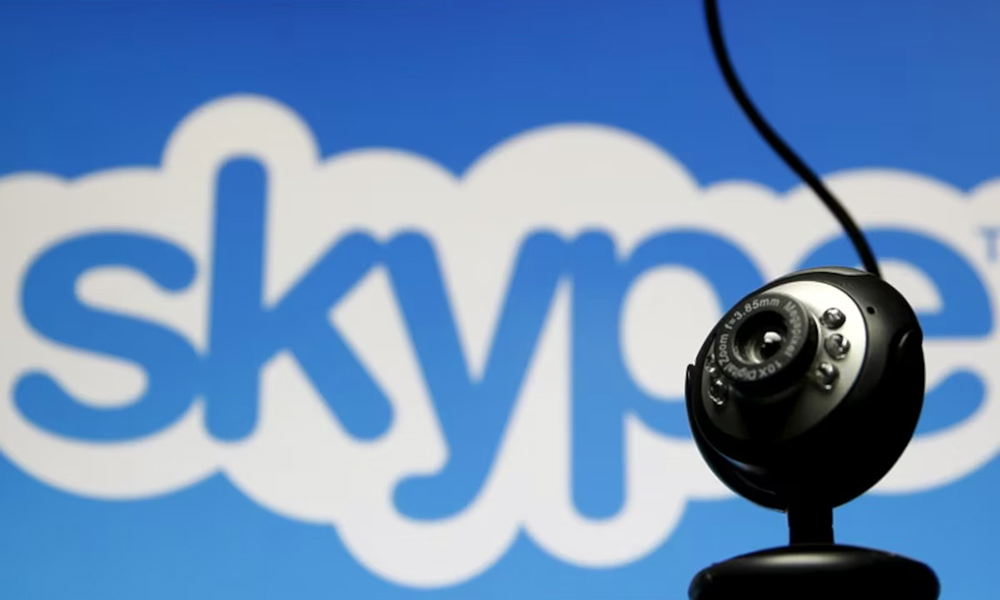
Skype officially shut down on Monday. The closure comes after nearly 22 years in operation, during which Skype became known for making international voice and video calls accessible and affordable for millions of people worldwide.
Microsoft acquired Skype in 2011 and says the decision is part of a strategy to focus on its other platform, Microsoft Teams.
Launched in 2003, Skype quickly became a revolutionary tool for free voice and video calls over the internet, amassing more than 300 million monthly users at its peak in the mid-2010s. The free platform changed how people communicated across borders, long before Zoom or FaceTime.
In 2011, Microsoft acquired Skype for $8.5bn, aiming to make it a central part of its communications strategy. But as competitors like WhatsApp, Zoom, and eventually Microsoft’s own Teams gained traction, Skype’s popularity faded.
On February 28, Microsoft said it would retire Skype on May 5 to streamline its services and prioritise Teams for communication and collaboration.
Microsoft has urged users to transition to Teams by visiting skype.com and utilising the “Start using Teams” feature. All Skype chats and contacts will remain accessible through Teams using the same login credentials.
Science & Technology
Apple moving to make most iPhones for US in India rather than China
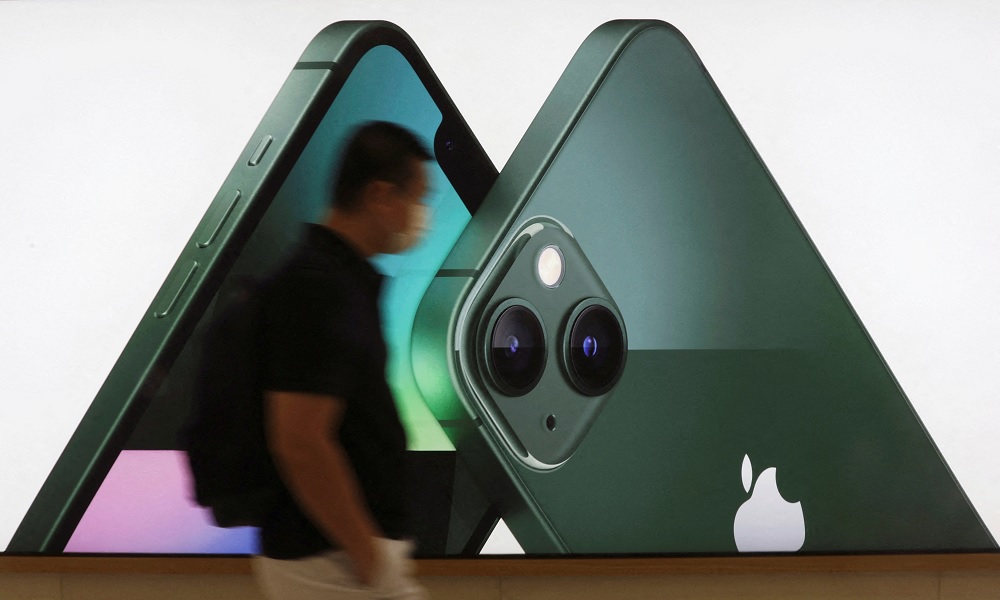
Apple aims to make most of its iPhones sold in the United States at factories in India by the end of 2026, and is speeding up those plans to navigate potentially higher tariffs in China, its main manufacturing base, Reuters reported.
The U.S. tech giant is holding urgent talks with contract manufacturers Foxconn and Tata to achieve that goal, the person, who declined to be named as the planning process is confidential, said on Friday.
Apple and Foxconn did not immediately respond to requests for comment, while Tata declined to comment.
Apple sells over 60 million iPhones in the U.S. annually with roughly 80% of them made in China currently.
Prime Minister Narendra Modi has in recent years promoted India as a smartphone manufacturing hub, but higher duties on importing mobile phone parts compared to many other countries means it is still expensive for companies to produce in India.
For iPhones, manufacturing costs in India are 5-8% higher than in China, with the difference rising to as much as 10% in some cases, the source said.
Apple has already stepped up production in India to beat U.S. President Donald Trump’s tariffs, shipping some 600 tons of iPhones worth $2 billion to the United States in March. The shipments from India marked a record for both its contractors Tata and Foxconn, with the latter alone accounting for smartphones worth $1.3 billion, Reuters reported last week.
In April, the U.S. administration imposed 26% duties on imports from India, much lower than the more than 100% China was facing at the time. Washington has since paused most duties for three months, except for China.
Trump’s administration has since signalled openness to de-escalating the trade war between the world’s two largest economies that has raised fears of recession.
The Financial Times first reported about Apple’s plan on Friday.
As Apple diversifies its manufacturing beyond China, it has positioned India for a critical role. Foxconn and Tata, its two main suppliers there, have three factories in all, with two more being built.
Science & Technology
China, Russia may build nuclear plant on moon to power lunar station, official says
Russia’s space agency Roscosmos said last year it planned to build a nuclear reactor on the moon’s surface with the China National Space Administration (CNSA) by 2035 to power the ILRS.
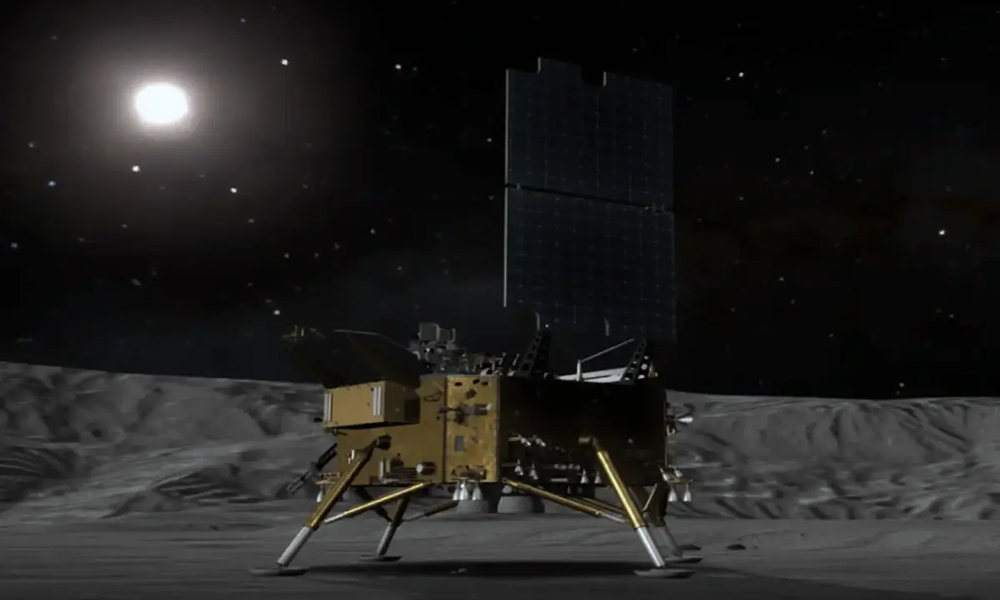
China is considering building a nuclear plant on the moon to power the International Lunar Research Station (ILRS) it is planning with Russia, a presentation by a senior official showed on Wednesday.
China aims to become a major space power and land astronauts on the moon by 2030, and its planned Chang’e-8 mission for 2028 would lay the groundwork for constructing a permanent, manned lunar base.
In a presentation in Shanghai, the 2028 mission’s Chief Engineer Pei Zhaoyu showed that the lunar base’s energy supply could also depend on large-scale solar arrays, and pipelines and cables for heating and electricity built on the moon’s surface.
Russia’s space agency Roscosmos said last year it planned to build a nuclear reactor on the moon’s surface with the China National Space Administration (CNSA) by 2035 to power the ILRS.
The inclusion of the nuclear power unit in a Chinese space official’s presentation at a conference for officials from the 17 countries and international organisations that make up the ILRS suggests Beijing supports the idea, although it has never formally announced it.
“An important question for the ILRS is power supply, and in this Russia has a natural advantage, when it comes to nuclear power plants, especially sending them into space, it leads the world, it is ahead of the United States,” Wu Weiren, chief designer of China’s lunar exploration program, told Reuters on the sidelines of the conference.
After little progress on talks over a space-based reactor in the past, “I hope this time both countries can send a nuclear reactor to the moon,” Wu said.
China’s timeline to build an outpost on the moon’s south pole coincides with NASA’s more ambitious and advanced Artemis programme, which aims to put U.S. astronauts back on the lunar surface in December 2025.
Wu said last year that a “basic model” of the ILRS, with the Moon’s south pole as its core, would be built by 2035.
In the future, China will create the “555 Project,” inviting 50 countries, 500 international scientific research institutions, and 5,000 overseas researchers to join the ILRS.
Researchers from Roscosmos also presented at the conference in Shanghai, sharing details about plans to look for mineral and water resources, including possibly using lunar material as fuel.
The ILRS preceded Russia’s invasion of Ukraine in 2022 but incentives for cooperation between Roscosmos and CNSA have increased since the outbreak of the war, according to Chinese analysts.
With China’s rapid technological advances and lunar achievements, and as Western sanctions prevent Roscosmos from many imports of space technology and equipment, China can now “alleviate the pressure” on Russia and help it “achieve new breakthroughs in satellite launches, lunar exploration, and space stations,” Liu Ying, a researcher at the Chinese foreign ministry’s diplomatic academy, wrote in a journal article last year.
-

 Latest News5 days ago
Latest News5 days agoCabinet Meeting convened to discuss Afghanistan’s population census plan
-

 International Sports5 days ago
International Sports5 days agoIPL 2025: Seven teams fighting for four spots
-

 World5 days ago
World5 days agoIsrael may seize all Gaza in expanded operation, officials say
-

 Regional4 days ago
Regional4 days agoAt least 26 civilians killed in Indian strikes on Pakistan: Islamabad
-

 Regional4 days ago
Regional4 days agoIndia strikes Pakistan over Kashmir tourist killings
-
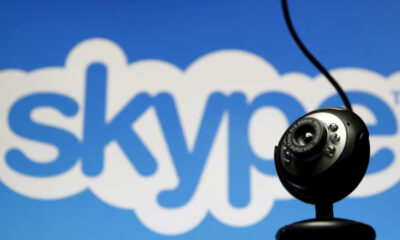
 Science & Technology4 days ago
Science & Technology4 days agoSkype ends operations after 22 years of service
-
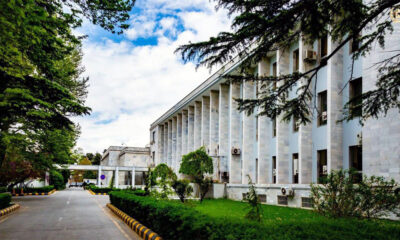
 Latest News4 days ago
Latest News4 days agoIslamic Emirate of Afghanistan ‘concerned’ over rising tensions between Pakistan and India
-

 World4 days ago
World4 days agoMacron to meet Syrian president on Wednesday, expected to discuss security


